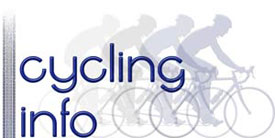My Quark power meter arrived yesterday.

I haven’t quite become Chris Froome, just yet (see tumblr: Chris Froome looking at stems)
Here are few initial observations on power meters.
- I remember seeing a photo of Bradley Wiggin’s power output after winning the UK 10 mile TT championship in 2011, and showing his average power output of 460 watts for the 20 minute race! It didn’t take long for the power meter to confirm, I’m not Bradley Wiggins.
- I’m not sure how a power meter is going to help me go any faster cycling up hills.
- I was doing a few hill climbs in training yesterday. The power varied considerably during the climb. When it got steep, it was ‘easy’ for the 3 second power output to rise to 450 – 500+. When the gradient eased off, the power output seemed to evaporate and it could fall to 350. It required great effort to keep it as high as on a steep gradient.
- It was interesting to see how in my first hill climb effort, you can easily start off with power above 500 watts, but, by the last minute, it was tailing off to 350.
- I’m not convinced looking at a power meter enhances you’re enjoyment of cycling. I’m still an old traditionalist at heart. I like riding on feel. Using a computer to gauge your effort somehow takes the ‘romance’ out of cycling. (see power meters and pushing the limits) Surely a skill in cycling is the ability to pace your efforts. I don’t think a power meter changes this skill. When you’re really racing a 3 minute hill climb, you don’t have the ability to even look at a power meter.

I really bought a power meter for time trials. I wanted to see how my pacing was working out for 10, 25, 50 and 100 miles. I’m hopeful that it will be useful and help improve efficiency of these rides. For the hill climb season, I can imagine doing the hill climbs, without even looking at it.
For the statistically minded, it’s still kind of interesting to have lots of data. The trick is being able to make use of it.
photo top: Source: Flickr Mark Geo
Photo bottom: Source: Justice BUK

Seeing how fast you fly up most hill climbs on Strava (how I found your blog- I googled your name from my local Streatley Hill ;0) ) I think you’re certainly not going to go slower with one fitted!
I’d be really interested to see a meaningful comparisons with what I term ‘Strava Watts’ (the ones they calculate).
It will be really interesting seeing how you chose to incorporate the data into your training.
I must say, I’m only just starting to use a HRM for my training (very amateur) and so far, I can pre-empt my HR Alarms by about a second just going on feel alone so will be interesting to see if you can do the same with power.
Good luck and keep us posted!
I definitely concur with the above,
For a short hill climbs a PM is more useful when looking back at the data to see improvement over time, especially if you plan to make significant changes to your training regimen such as adding weight training or technique specific work.
I’d recommend Golden Cheetah for analysis of the data http://www.goldencheetah.org/, it also has a nice utility for recording PM data and displaying it as a graph in real time, which is great to use with a turbo trainer rather the trying to look down at your head unit.
How much did you pay for it mate?
£1400 for Quark power meter (I got the 100g lower weight option)
As a user of a power meter for the last 2.5 years I can tell you now that it’s completely useless for looking at during short sharp efforts, but on long steady climbs (or in your case, TT’s) it’ll be incredibly useful, once you know what YOUR numbers are, which is the most important thing. XYZ rider might have an FTP of 350 watts, ABC rider 375 watts, but neither of them are you, and the only thing that’s comparable in that respect is w/kg.
I would say use the power meter for 3-6 months before you actually make any judgement on it. Don’t pay attention to it during your rides, just check your data afterwards and you’ll soon start noticing trends. It’s a shame the TT season is coming to a close now because it would have been incredibly useful for you to have had it on this season so you could do winter training using your power numbers and see if you’ve improved, after all, cycling is so full of variables, wind, weather, equipment, etc. but the one thing that is a constant is power.
I’m by no means an expert but if you’d like to talk power data then feel free to drop me an email.
Thanks Jon, sounds good advice.